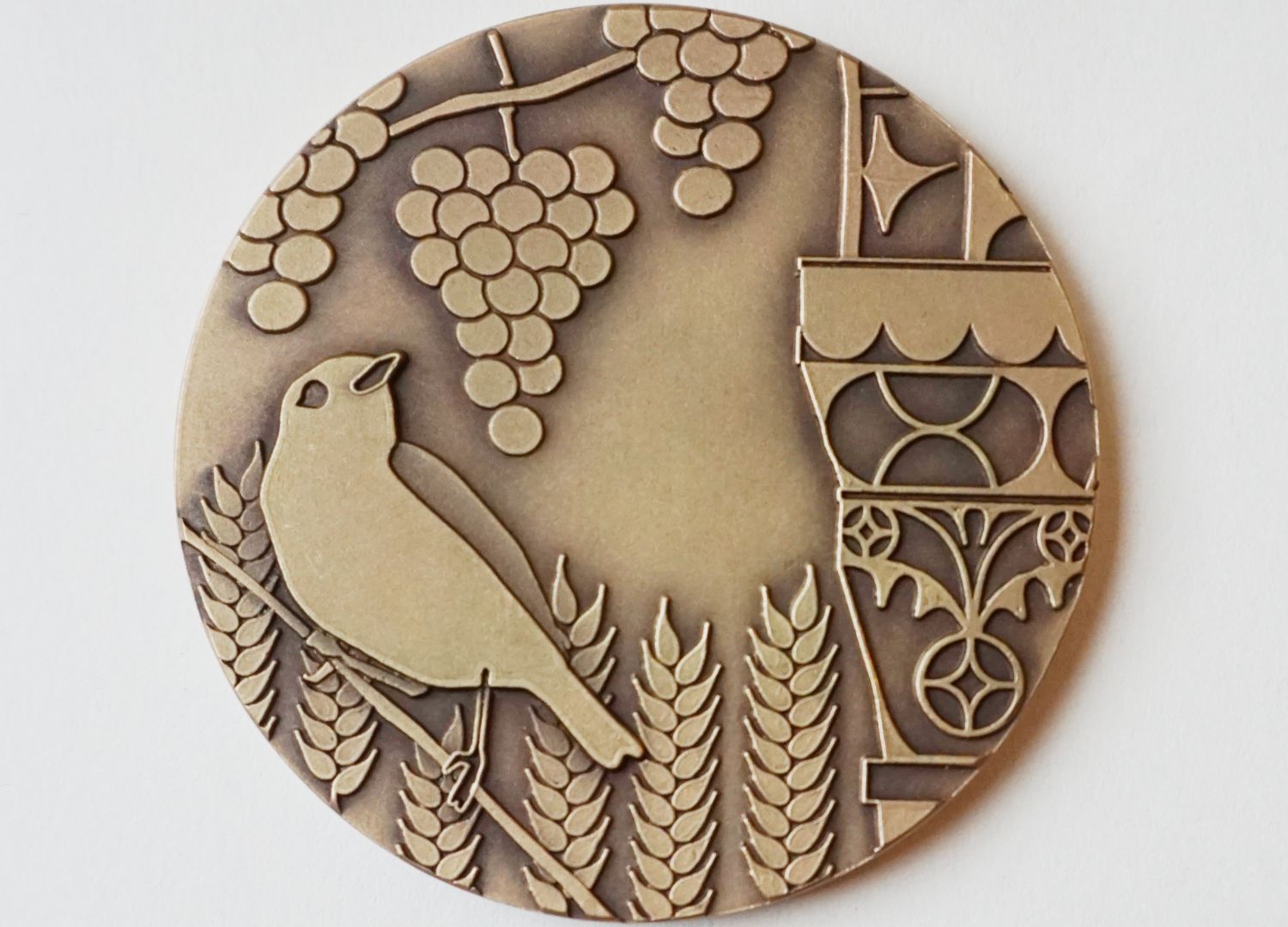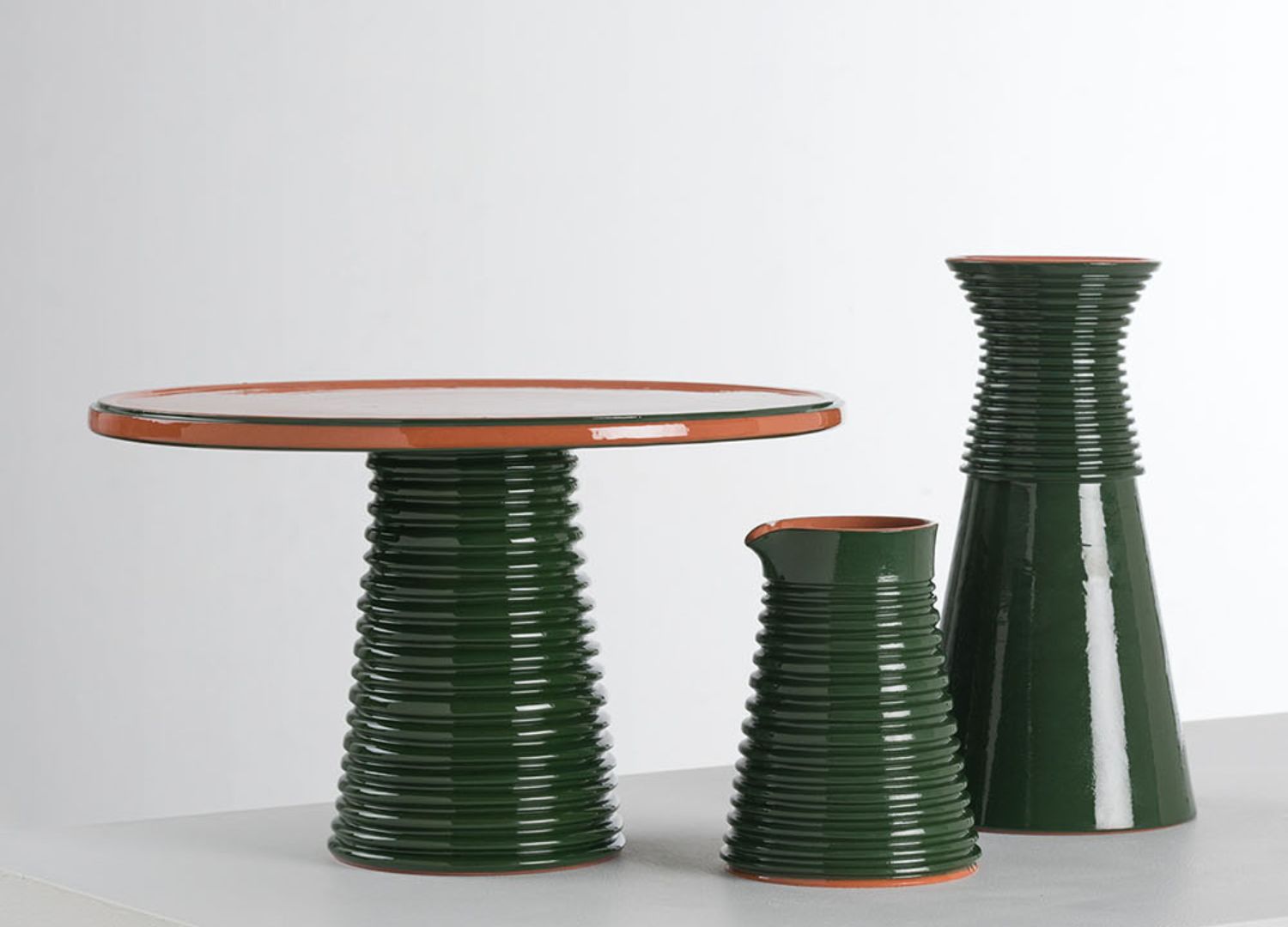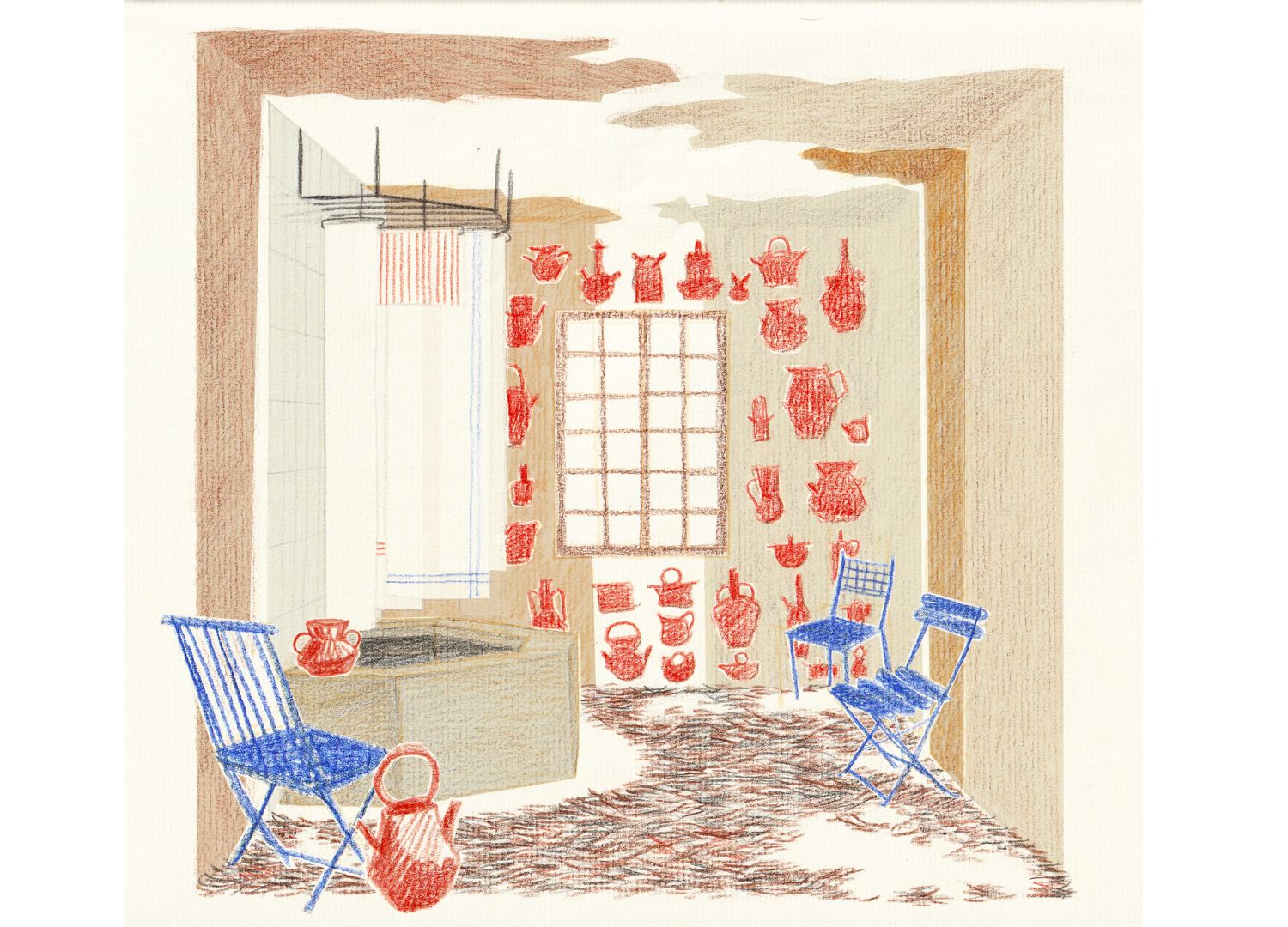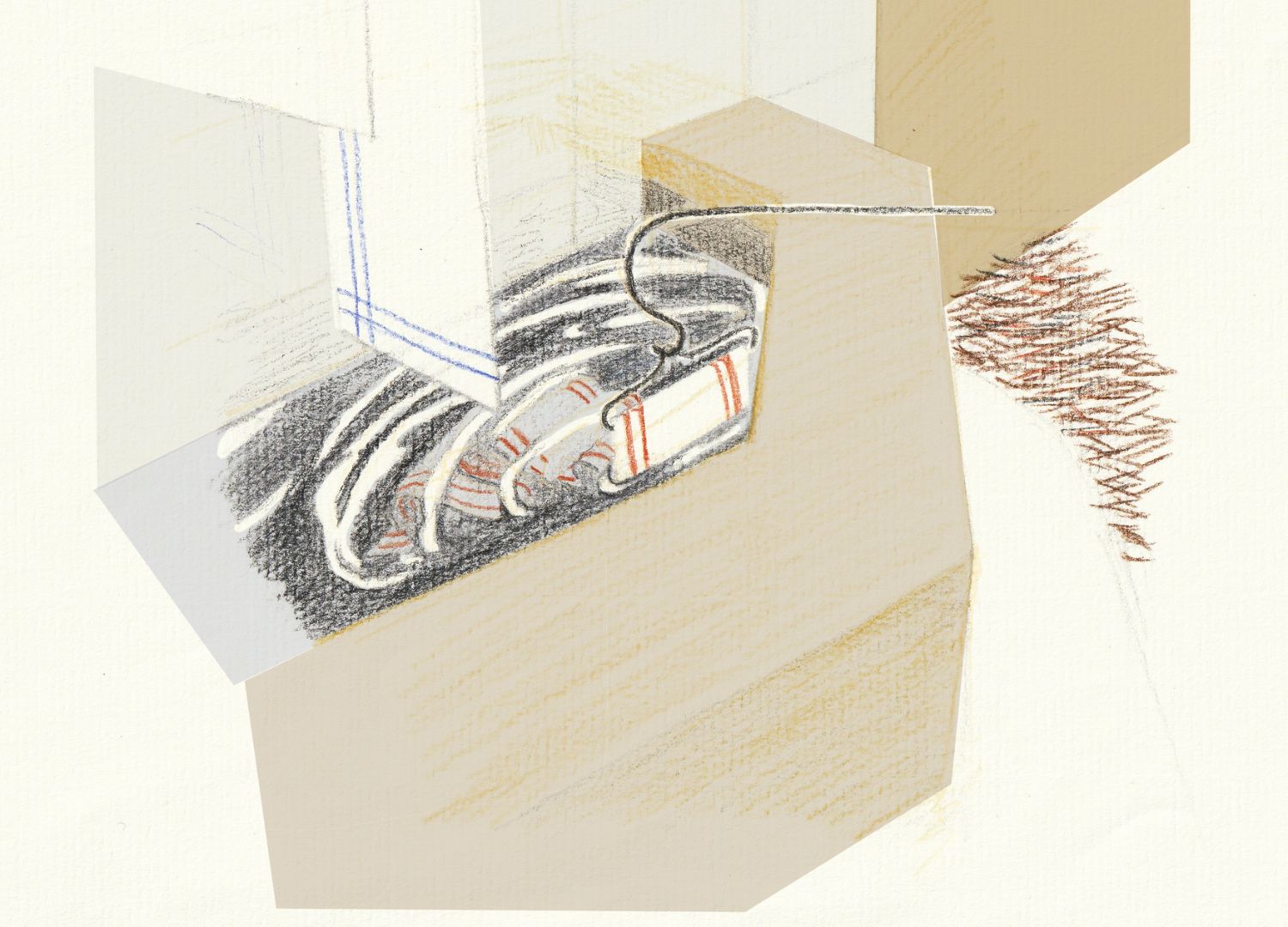Incorporating anthropology and sociology into the design process
Clèmence Valade’s story is a testament to the power of interdisciplinary influences, the value of community, and the impact of thoughtful design on everyday life.

The French designer Clémence Valade shares her unique journey into the world of design, a path that began in the creative and self-sufficient environment of a French village and led her to bridge the gap between science and art through her discovery of design.
Valade’s approach to her work is deeply influenced by her commitment to understanding the broader context of her projects, integrating anthropology and sociology into her design process, and a strong dedication to environmental sustainability. She emphasizes the importance of user-centric design, extensive research, and collaboration with craftsmen to create products that are not only functional and sustainable but also embody a frugal aesthetic.

Her story is a testament to the power of interdisciplinary influences, the value of community, and the impact of thoughtful design on everyday life.
Who is Clémence Valade? Can you share the origins of your journey into the design world, and what motivated you to follow this career path?
Clémence Valade:
“From a young age, I was both imaginative and empathetic, yet I also harbored a fascination with a more practical, science-driven perspective of the world. Raised in a quaint village in the French countryside, I was surrounded by a community where self-taught skills were essential for creating furniture, homes, tools, toys, and more. This environment, rich in creativity and a hands-on mentality, deeply influenced me. I frequently found myself crafting small projects from materials like cardboard, wood, and paper.
As the time approached to select a field for my advanced studies, I sought a discipline that bridged the gap between science and art, something akin to architecture but with a more personal touch. That’s when I stumbled upon design. The discovery came just a few months before finishing high school, at a time when the concept of Design, much less the specifics of design education, was unfamiliar to those around me.

Despite this, their unwavering support encouraged me to hastily assemble a portfolio and apply to public schools. Facing exams and interviews was daunting without any formal background in design, but ultimately, someone saw potential in the enthusiastic yet unrefined teenager I was. For that opportunity, I am eternally thankful!”
Can you provide details on any unique design techniques or approaches that set your work apart from that of other design studios in the industry?
Clémence Valade:
“My unique approach is shaped by incorporating anthropology and sociology techniques into my design process. Understanding the broader context of the requirements presented to me is crucial, ensuring that my designs not only have a positive impact but also remain relevant and sustainable over time. This perspective often leads me to adjust client requests, steering them towards solutions that, while potentially smaller in scale, are significantly more effective.
Additionally, I am deeply aware of the environmental challenges facing our planet and the urgent need for sustainable practices. Consequently, eco-design principles are integral to my work—I strive to create durable, easily repairable, or adaptable products using environmentally friendly materials. This commitment to sustainability often results in a “frugal” aesthetic characterizing much of my design work.”

You’ve stated your objective is to support local businesses and talents via environmentally-conscious design initiatives. Could you explain what this involves?
Clémence Valade:
“Situated in an industrial town historically centered around metalworking—ranging from weaponry and automobiles to aircraft—and encircled by agricultural fields, my studio operates within a landscape poised for transformation. The industries that have long defined this area are on the cusp of needing to pivot: revising their business strategies, applying their expertise to new sectors, and more. A few forward-thinking entities have already embarked on this journey, pioneering new sustainable materials and organizational models.
Remarkably, design remains an underutilized resource in their evolution. To bridge this gap, I collaborate with local enterprises to enhance their visibility through exhibitions, product design, and service-oriented strategies, providing them with innovative development tools. This initiative not only aids in their transition but also aims to inspire other businesses to embrace change. Furthermore, I am committed to supporting local artisans, prioritizing their craftsmanship for the production of objects and furniture whenever possible.”

How crucial are research and user feedback in your design methodology? How do you collect and incorporate insights into your designs?
Clémence Valade:
“My design process is fundamentally user-centric. I do not merely rely on my clients’ assertions regarding their users’ needs; instead, I make it a point to engage with and observe the users firsthand. My projects are grounded in direct observations, often before any conceptual sketches are drawn. Convincing clients of the value of this thorough analysis can be challenging, especially when they have conducted their own preliminary assessments and are eager for me to commence the “designing” phase.
Educating clients about the design process is a significant aspect of my role, particularly in France, where many still perceive design primarily as an aesthetic endeavor, occasionally functional, without recognizing the extensive research, observation, and analysis that underpin effective design. When it comes to gathering feedback, I advocate for testing prototypes in real-world contexts as much as the project timeline allows.

However, when such testing is not feasible, I turn to my network for input, seeking out individuals—often fellow designers with an eye for detail—who can provide constructive criticism. This approach enables me to evaluate the project comprehensively and implement any necessary refinements.”
Should you choose a project that best reflects your design ethos, which would it be and for what reasons?
Clémence Valade:
“The basket, a key piece from my “Us et Coutumes” collection, was a central element of my graduation project, which aimed at fostering healthy habits within the household. I specifically focused on dietary habits due to their significant environmental impact. My design philosophy for this project was to encourage lifestyle changes through the allure of nostalgic items, steering clear of the guilt often associated with environmental discourse. The goal was to pave the way for a desirable, frugal future.
The design of the basket is intended to encourage the consumption of fruits and vegetables. It is crafted to hold a substantial quantity of produce without overcrowding or causing spoilage, all the while saving precious countertop space. Additionally, it transforms into a dynamic display of healthy choices, inspiring consumption through visual appeal.

What sets this project apart for me is not just the design itself but the process of bringing it to fruition. After deciding on the overall form and selecting wicker as the material, the actual creation process was a journey of discovery. I approached a local basketmaker, shared my vision with him, and together, we devised a method to weave this vision into reality.
Collaborating with craftsmen, who bring their unique expertise to the table, is something I deeply value. My expertise lies in conceptualizing designs, not in the actual crafting. Post-graduation, the initiative to produce the basket commercially was met with enthusiasm, and I was adamant about involving the same basketmaker who helped prototype the design. The basket has since been in production, and receiving photos of it filled with seasonal produce from people’s gardens is something I cherish deeply.”
Which designers or architects serve as your inspiration or influence? Additionally, what sources outside the design realm inspire you?
Clémence Valade:
“I am currently drawn to the work of Charlotte Perriand, whose contributions to product design and interior architecture cannot be overstated. Her ethical approach and commitment to craftsmanship are particularly remarkable. Perriand’s designs stand out for their ability to transcend conventional forms and functions, unlocking the true potential of objects and presenting them in pristine designs. Additionally, I find inspiration in traditional objects and furniture, especially those that are commonplace.

These items were often crafted from local materials, maximizing their utility with minimal energy, resulting in functional and sometimes ornate pieces that could adapt alongside their users. Compared to the stark simplicity of modern interiors, which often resemble white cubes, the richly textured, ornamented, and materially diverse spaces of the 1900s, where every area had a purpose, offer a wealth of inspiration. The past, with its intricate balance of functionality and aesthetics, provides a fertile ground for creative exploration.”
What key piece of advice would you offer to recent design graduates looking to start their own design studio?
Clémence Valade:
“Joining a designers’ association is highly recommended! As the vice-president of my regional association (FDNA), I’ve benefited immensely from connecting with fellow designers who have navigated the entire journey of establishing a studio. It’s an excellent way to get to know the local design community, uncover the dynamics of design “politics,” and position yourself to take on larger projects that might be beyond your individual capacity.

While design can be a competitive field, it’s important to remember that each of us has our unique strengths. Regular interactions with other designers more often result in opportunities rather than competition.”













